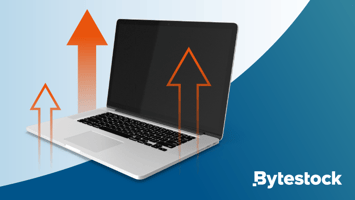Server capacity planning is a critical aspect of maintaining smooth business operations, and by...
5 IT Mistakes to Avoid When Moving to a New Office (And How to Get It Right)

Moving offices? It’s a big deal. And whether you're scaling up, relocating, or just craving a better space, there’s plenty to think about. Among the excitement (and the bubble wrap), it’s easy to let your IT setup slip to the bottom of the priority list.
But here's the thing: your tech is the backbone of your business. If it doesn't work on day one, your team can’t either.
We’ve helped countless businesses get their IT infrastructure right. And we've seen the same five mistakes crop up time and time again. So here they are…plus some quick wins to help you avoid them.
1. Leaving IT Planning Until the Last Minute
We get it, there’s a lot to juggle. But planning your IT move the week before you relocate is a recipe for stress.
Why it’s a problem: Lead times for internet connections, hardware upgrades, and cabling installations can stretch to weeks. Miss that window, and you’re stuck in the new office with no connectivity.
What to do instead: Start planning your IT move as soon as you confirm your new location.
2. Underestimating Internet & Network Requirements
It’s not just about plugging in a router. Your new space might need new cabling, boosted Wi-Fi coverage, or even a different internet package entirely.
Why it’s a problem: If your new office has thick walls, poor layout for wireless coverage, or existing cabling that’s seen better days, your connection could be patchy or non-existent.
What to do instead: Run a connectivity audit before the move. Know what you’re walking into, and what upgrades might be needed.
3. Forgetting About Security During the Transition
Moving offices is a vulnerable time. It’s easy to forget your cybersecurity best practices in the shuffle.
Why it’s a problem: Laptops left in unlocked vehicles, servers moved without proper protocols, unsecured Wi-Fi on day one—it’s a hacker’s dream.
What to do instead: Keep security front of mind throughout the move. That includes encrypted backups, password resets, and physically secure transport for sensitive equipment.
4. Overlooking Hardware Compatibility
New desks, new layout… but is everything compatible?
Why it’s a problem: You’d be surprised how often monitors don’t fit new desk setups, or server racks won’t fit through new doors. (Yes, really.)
What to do instead: Take measurements. Test hardware where possible. And make sure your infrastructure is flexible enough to adapt.
5. Not Having a Contingency Plan
Even with the best planning, things can go sideways.
Why it’s a problem: A single missed cable or incorrect configuration can derail operations for hours or days.
What to do instead: Build in buffer time. Have a fallback plan (like remote work options or staggered deployment). And know who to call if things go south.
Want to Take the Guesswork Out of Your Move?
At Bytestock, we know the challenges you face when relocating. That’s why we’ve put together a straightforward, no-jargon checklist to make sure your IT is sorted before, during, and after your move.





